In Depth: “Raven and the Box of Daylight”
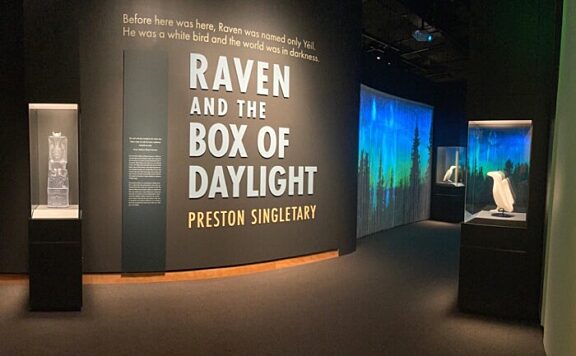
1st February 2022
BEFORE HERE WAS HERE, RAVEN WAS ONLY NAMED YÉIL. HE WAS A WHITE BIRD AND THE WORLD WAS IN DARKNESS.
Raven and the Box of Daylight is the Tlingit story of Raven and his transformation of the world—bringing light to people via the stars, moon, and sun. The exhibition features a dynamic combination of artwork, story-telling, and encounter, where the story unfolds during the visitor’s experience.
Visitors are immersed in Tlingit culture through a dynamic, multi-sensory environment, including recordings by storytellers; music; recordings of Pacific Northwest coastal sounds; and a backdrop of shadows and projected images. The exhibition is active, surprising, and dramatic, and engages the viewer through sight and sound.
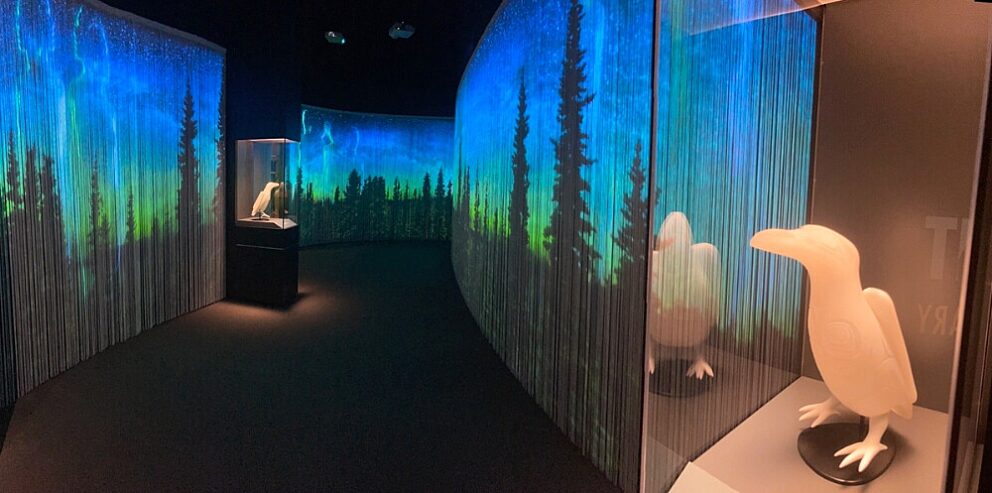
Learn more about the “Preston Singletary: Raven and the Box of Daylight” exhibition in a new article by the Smithsonian's National Museum of the American Indian Magazine, titled “Transformations: Groundbreaking Glassmaker Preston Singletary Brings North Pacific Coast Cultures to Life”. Anne Bolen describes the viewer's first encounter upon entering the exhibition:
"First, you enter a world in darkness. Then moving into a dim room, you hear and see rain falling behind a canoe. Across from this is an all-white raven.
At the center of the room, you see the bird’s remarkable transformation into a human boy. You will next enter a Tlingit clan chief’s house that has a great bounty of precious objects, including intricately carved glass boxes that glow.
While many versions of this tale are told, it has never been presented this way before. The exhibition features more than 60 glass objects and sculptures created by international Tlingit artist Preston Kochéin Singletary. Visitors will be guided through Raven’s story by stunning glass pieces paired with projected light, moving imagery and ethereal soundscapes."
Read the full magazine article now to get an in depth look at this dynamic exhibition on view until January 29th, 2023 at the Smithsonian's National Museum of the American Indian in Washington, DC.
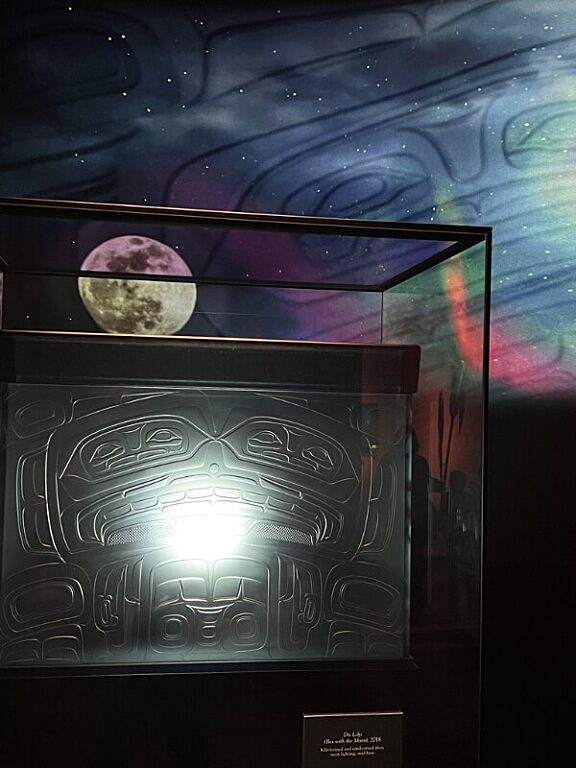
Box with the Moon (Dís Lákt), Kiln-formed and sand-carved glass with lighting, 86 3/4" × 31 1/2" × 19 1/2"
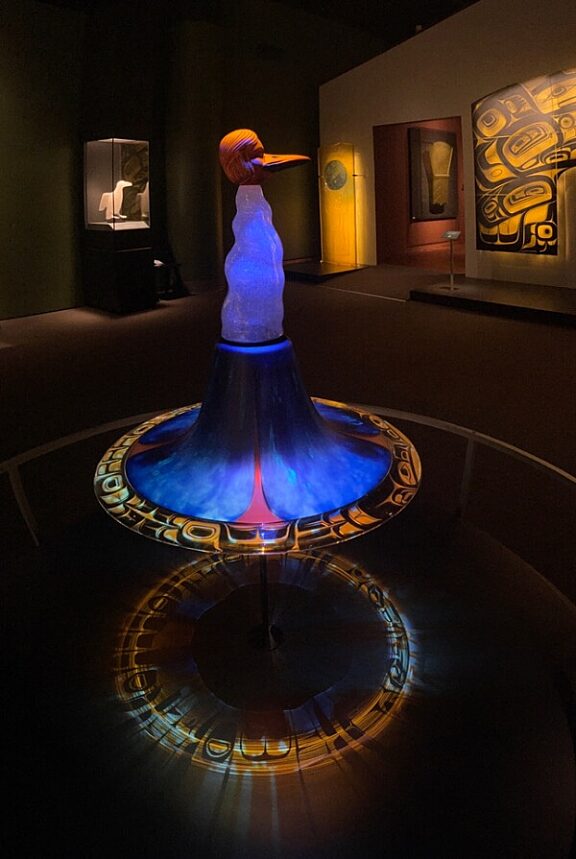
Raven Birth (Yéil Koowdzitee), Blown, hot-sculpted, and sand-carved glass with video projections, 62" × 48"
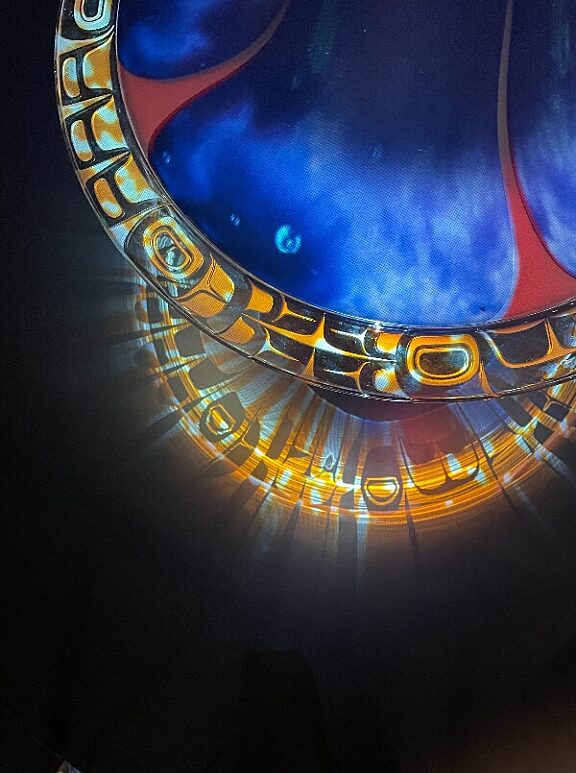
Raven Birth (Yéil Koowdzitee), detail photo

Killer Whale Canoe (Kéet Yaakw), Kiln cast and sand-carved glass, 37 3/4" × 144" × 20"
Photos courtesy of Preston Singletary and Juniper Shuey, Smithsonian's National Museum of the American Indian - Washington, DC.
- Smithsonian's National Museum of the American Indian
- Smithsonian Magazine, “Transformations: Groundbreaking Glassmaker Preston Singletary Brings North Pacific Coast Cultures to Life”, Winter Issue 2021
- The Seattle Times, "Seattle Artist Preston Singletary Gets Solo Show at Smithsonian’s National Museum of the American Indian", February 3rd, 2022